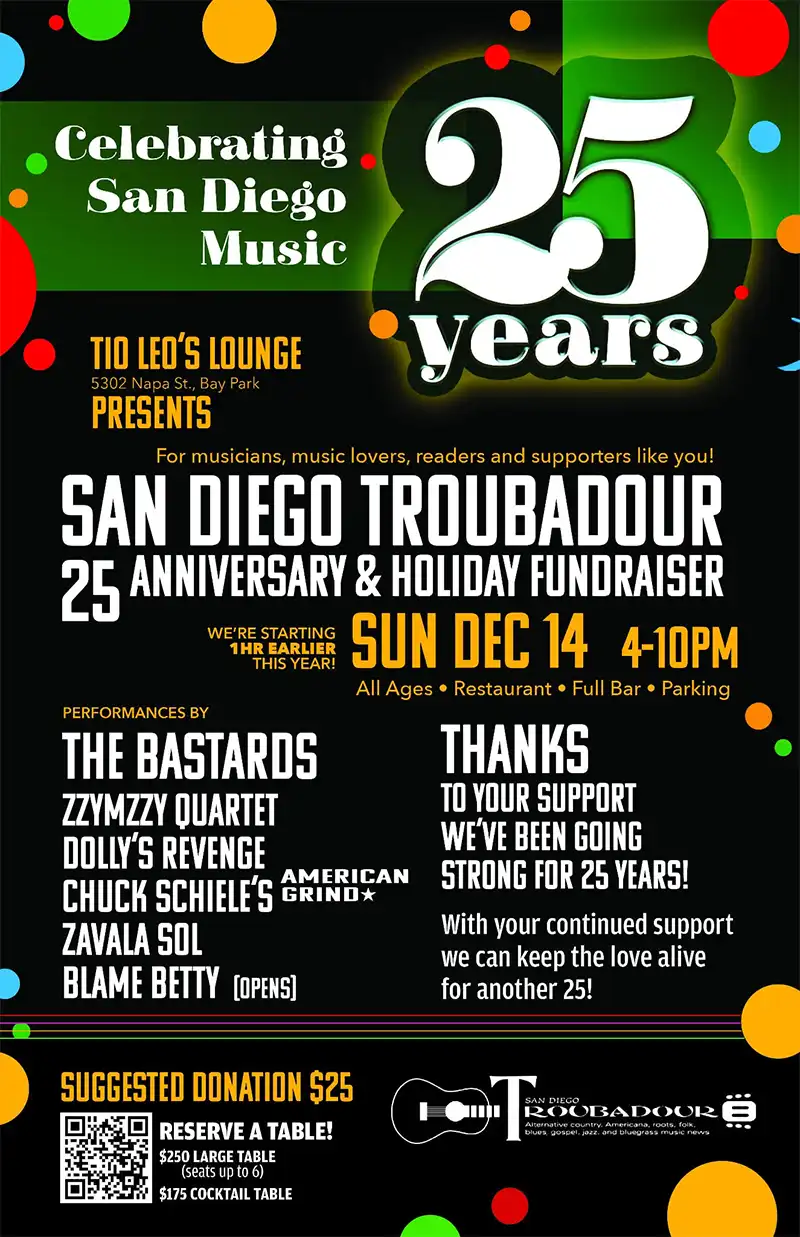Bluegrass Corner
What Makes a Bluegrass Band?
Not everyone agrees on what makes up a bluegrass band, but there is a general consensus on the classic composition shown in the photo: A banjo, acoustic guitar, fiddle, mandolin, and upright bass. Added by Bashful Brother Oswald and later by Josh Graves of Flatt and Scruggs the dobro has also become an accepted part of the bluegrass band (although Bill Monroe, the father of bluegrass , is reported to have stated about the dobro: “that ain’t no part of nothing”). Pretty simple, right? Not so fast.
What about the accordion? It’s certainly not typically in a bluegrass band, but hey, Bill Monroe had one in his band, at least for a time. Generally, in the modern era, the presence of an accordion would indicate the band is not bluegrass. Celtic perhaps, but not bluegrass.
What about electric guitars? Flatt and Scruggs tried them out, as have many other bluegrass stalwarts. But generally, the presence of a Stratocaster or other electric guitar is a giveaway that the band is not bluegrass. A plugged-in acoustic guitar, however, is another matter as these are often found in bluegrass bands. How about an electric bass? These are also often found in bluegrass bands and are generally accepted as not changing the character of the band.
How about drums? Drums are not part of most bluegrass bands, but Doyle Lawson and Quicksilver, a respected traditional bluegrass band, now uses them regularly as do others, and Flatt and Scruggs experimented with them, too. There is no consensus on the issue of drums, although there are more bluegrass bands playing without them than with them, and it is safe to say that drums are controversial and when used, it is typically one snare drum played with reserve.
What if some of the classic instruments are missing, can it still be a bluegrass band? What if there is no banjo? Ahh, the real debate begins! Some traditionalists argue the band cannot be “bluegrass” without a banjo, others argue that a banjo is not needed if the music played is bluegrass. Certainly, few would disagree that the banjo is a signature sound in bluegrass, but many would argue it is not essential. Consensus: None! Weight of opinion: A banjo is an essential part of traditional bluegrass.
What if the classic five instruments are present: banjo, fiddle, guitar, upright bass, and mandolin — is the music always bluegrass? Most would agree “no”; it also depends on the singing style and what is played. Trampled by Turtles, Mumford and Sons, Railroad Earth, Yonder Mountain String Band, and others may play the classic instruments but many would contend that what they play is not “bluegrass,” or at least not traditional bluegrass. So, what is the sound that characterizes bluegrass?
The traditional bluegrass sound includes two- and three-part harmony singing, the so-called “high lonesome sound,” and the playing of songs that tell a story through a series of verses and choruses with instrumental solos in between. Bluegrass instrumental tunes are typically structured — two A parts followed by two B parts. Distinguish this from other modern acoustic music played with bluegrass instruments but characterized by singing that may have more of a rock or pop style and that does not utilize the classic “high lonesome sound” of bluegrass, and that presents instrumentals in an unstructured “jam band” format. Listen to the Avett Brothers or Yonder Mountain String Band and compare what they play to the classic bluegrass of Flat and Scruggs or Bill Monroe and you will hear the difference.
At the end of the day, what does it all mean whether we agree on what is, and is not, a “bluegrass band?” Not much that one can grab on to. Each person is entitled to an opinion. If you think bluegrass has to have a banjo and has to be played like Flatt and Scruggs or Bill Monroe, that’s a defensible position. If you think Alison Krauss and Union Station (who play many of their tunes without a banjo) and the Avett’s are bluegrass, hey that’s defensible too.
In the end, the only distinction that matters is whether the music is good and well performed. The fact there may be some confusion in communication, for example, if I say “I love bluegrass” and I mean the Avett Brothers, and you say, “I love bluegrass too,” but you hate the Avetts and prefer the older traditional bluegrass such as Danny Paisley, is an issue that can be quickly overcome. We may initially think we share common bluegrass tastes but will soon find out in further discussion where we diverge.
The good news is that there is more great acoustic music being produced and performed today than ever before, whatever you choose to call it. Whatever your tastes and definitions, you can find something you will like. We all share that common bond for acoustic music well performed and there is plenty of room, and opportunity, for differences in taste.
ROB ICKES AND JIM HURST will be appearing at the Del Mar Powerhouse on Sunday, December 16. Rob has won the “Dobro Player of the Year” award from IBMA 14 times and is the most awarded individual instrumentalist in the history of IBMA. Jim Hurst is, simply put, one of the most creative, most awarded, and most skilled guitar players on the planet. These two do an incredible duet show that shouldn’t be missed. 7pm (doors open at 6:30pm) $20 general admission $35 patron/reserved seating. Tickets and info: http://delmarfoundation.org/robickes.html
AUDIE BLAYLOCK AND REDLINE, one of the hottest of the top touring bluegrass bands will be in San Diego on Thursday, January 24 at the First Baptist Church of Pacific Beach at 4747 Soledad Mountain Road. The evening concert is presented by the San Diego Bluegrass Society. Admission is free (a goodwill offering will be taken). Opening the show will be acclaimed local bluegrass band Lighthouse. For details visit: www.sandiegobluegrass.org






